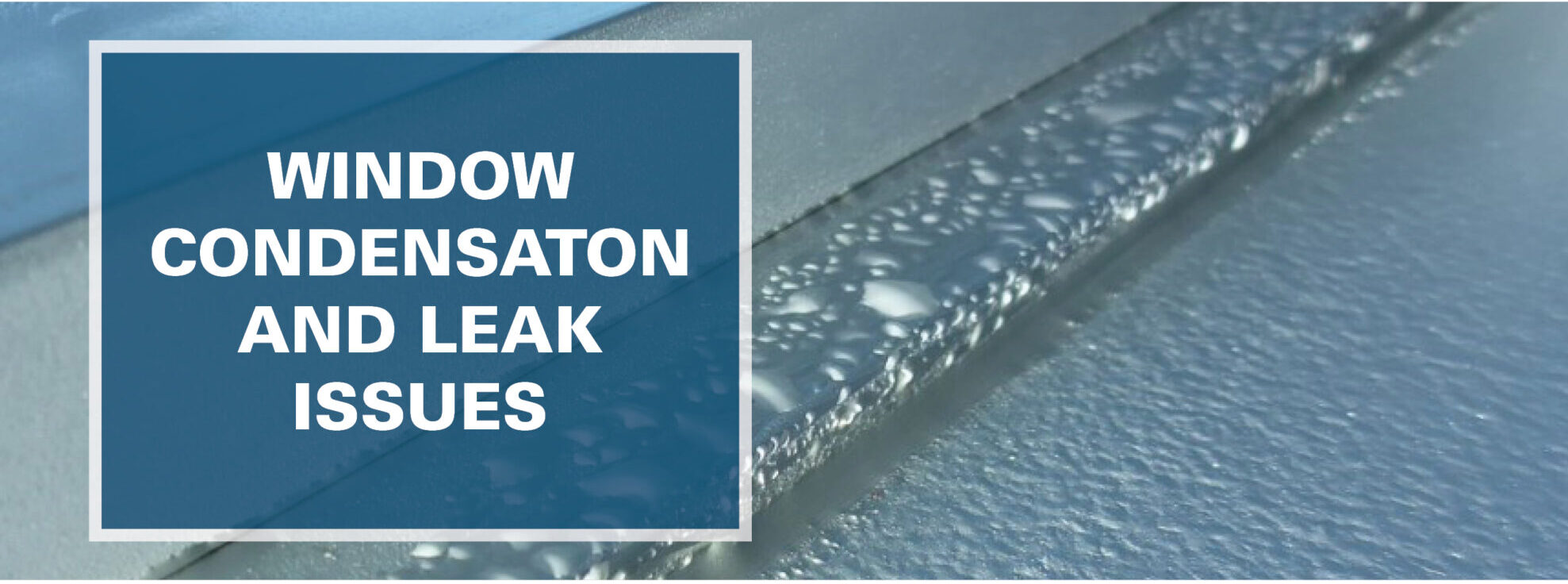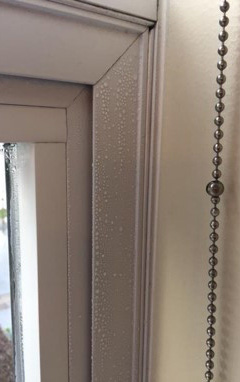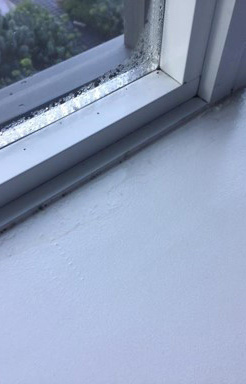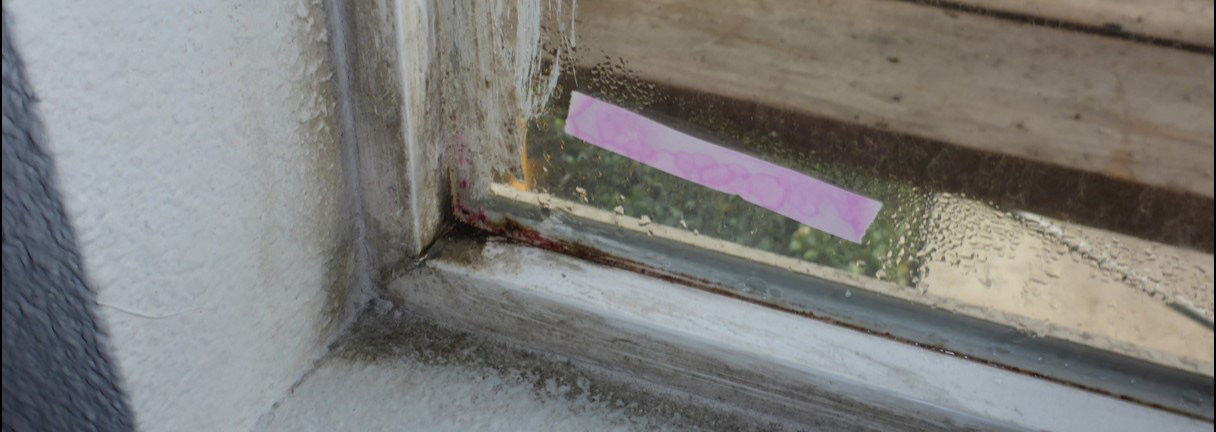
Windows are the last barrier between outside air and occupants, between cold air and warmer air. Thus, certain circumstances cause moisture to condense on the glass, which can result in leaks in some window assemblies.
There are two types of condensation; one where the condensation is on the surface of the glass. The second type of condensation is where water condenses between dual panes of insulated glass called, Insulated Glass Unit (IGU). Dual pane glass provides insulating function as well as reduces sound transmission and the gap between the two layers of glass is usually filled with an inert gas. The condensation between dual panes of glass is an indication that the seal between the IGU has failed and either water or moisture has entered this space. Most windows come with a ten year warranty for the IGU and this type of failure has historically been included in new construction defect litigation, where buildings are less than ten years old. Most homeowners and other building owners can also call the window manufacturer and assert a warranty claim if the window is less than ten years old.
Preventing Condensation
If a window has an interior removable panel you can help prevent condensation between the panes of glass by making sure that the breather holes in the sash are free of dirt and debris. Use a pipe cleaner, nail or wire to clean out the breather holes. An area of possible leakage is the rubberized gaskets around the glass panes, which are designed to provide a water-tight seal. These can and do fail to function properly, creating leaks, especially during wind driven rainstorms. Depending on their age, maintenance, and other factors, gasket failures can be the responsibility of the installer/retailer, whom you should contact for warranty information.
Condensation can also occur on either the room side or the exterior side of the glass or on the window frames, most commonly in aluminum framed windows. Condensation on the glass or window frame has the same general mechanism as moisture condensing on a glass of ice cold water. The colder the surface coupled with more humid and warm air results in condensation. Generally in California the relative humidity is less than 40% indoors in the winter time. At 40% relative humidity and indoors temperature of 70° F, condensation will occur when this indoor air touches a surface that is colder than 45° F. Since glass and aluminum are very poor insulators, with R values between R = 0.1 and R = 0.23, condensation is likely to occur at outdoor temperatures of less than 43° F. Aluminum framed windows are also available as “Thermally Broken” in which case, there is a piece of insulation between the interior and exterior frame of the window.
High Humidity Levels Can Cause Condensation
If you are experiencing heavy condensation on the windows (on the surface of the glazing or frames) in the winter time, there could be several reasons for it. One of the factors to consider is the humidity level inside your home. Unusually high levels of humidity will result in condensation on dual pane windows and in mildly cold exterior temperatures.
For example, if the interior temperature is 70° F and relative humidity is 60%, condensation will occur at 55° F (as compared to 45° F in the above example). Inexpensive temperature/humidity gauges are available in novelty stores that can be helpful to observe unusual humidity levels in the building or house. Unusually high humidity levels in the house, especially around a window, can be caused by various factors that can lead to excessive condensation.
These factors are:
- Leaks occurring at the window frame at jamb/sill junction
- Exterior wall leaks at the wall/window assembly
- Roof or other leaks in the wall assembly
- Wet or moist crawl space
- Inadequate ventilation in the house
- Inadequate ventilation, especially in wet areas, or lack of proper exhaust fans in rest rooms
- Improperly ducted cloths dryer


Who is Responsible?
While normal condensation on window panes and frames is the responsibility of the owner, leaks around window frames, water intrusion through the wall assembly, and vapor penetration that condenses into water and causes damage can be more complicated in some buildings.
For example, it was the responsibility of every developer or builder to properly design and install wall systems including flashings, vapor barriers and window assemblies, so that water did not improperly intrude through walls or around the window frames. The developer also has responsibility for preventing water vapor from penetrating wall assemblies and condensing in the wall, causing damage to the wall assembly. This developer responsibility runs for ten years after initial occupancy, and then passes on to the building owner for private homes and other buildings, and onto the HOA or the apartment owner in the case of multi-family dwellings. In the case of an HOA, the HOA always has responsibility for maintaining the wall assembly to prevent water intrusion and damage. The extent of this responsibility is normally spelled out in the HOA’s governing documents.
If you are a building owner, it is a good idea to take stock of the condition of your windows, perform a survey and take corrective action.
If you live in an HOA, contact your HOA immediately to inform them of your visible condensation on windows and frames, or if you suspect that there may be water intrusion and damage around the window frames. This gives the HOA the early opportunity to become aware of the potential problem and to asses the extent of possible damage. Often, HOAs retain the services of specialized consultants to assist them in that assessment.

CATEGORY: Condensation/Window Failure/IGU Failure
